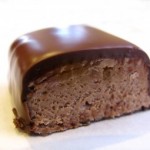Interesting Halloween Facts Roundup
We’ve covered quite a few Halloween related facts here on TodayIFoundOut over the years. Here’s a list of all of them, as well as some interesting facts about various candies. Happy Halloween! 🙂
Halloween Related Facts:
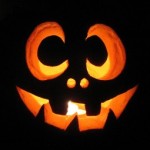 Why are Carved Pumpkins Called “Jack O’ Lanterns”?
Why are Carved Pumpkins Called “Jack O’ Lanterns”?
The name “Jack O’ Lantern” was originally one of the numerous names given to ignis fatuus (Medieval Latin for “foolish fire”), another of which is “Will O’ the Wisps”, basically the odd light that can occasionally be seen over marshes, swamps, and the like. “Jack O’ Lantern” first popped up being used this way around the mid-17th century in East Anglia, UK and spread from there through parts of England, Ireland, and Scotland. This name likely originally derived from the practice of calling men generically… (more)
 Where the Word “Witch” Came From
Where the Word “Witch” Came From
The word “witch” derives from the Old English words “wicca” and “wicce” (masculine and feminine forms, respectively). This later became “wicche”, in Middle English, which meant the same thing as “wicca” and “wicce”, but didn’t distinguish between the genders, being used to refer to both men and women. However, over time, using “wicche” to refer to men became less and less common, being replaced by synonyms such as “wizard”, “warlock”, and “sorcerer”. By the 16th century, the spelling had changed from… (more)
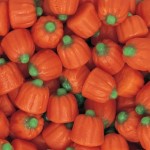 How Candy Pumpkins and Halloween Helped Change Daylight Saving Time
How Candy Pumpkins and Halloween Helped Change Daylight Saving Time
Before 1966, Daylight Saving Time in the United States was set via a patchwork of state and local laws, often causing conflict and confusion. While there are some exceptions — states can choose not to participate in Daylight Saving Time at all (and Arizona and Hawaii do just that) — the Uniform Time Act, passed by Congress in 1966, standardized Daylight Saving Time across the nation. As set forth by the Uniform Time Act, Daylight Saving Time began on the last Sunday in April and ended on the last Sunday in October. But the Act has been amended twice since. First… (more)
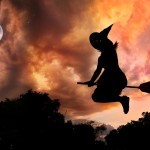 The Fascinating Reason Witches are Commonly Depicted Flying on Broomsticks
The Fascinating Reason Witches are Commonly Depicted Flying on Broomsticks
We’ve heard this one. To get high, of course! But seriously, it’s thought the idea of witches flying around on broomsticks came from the practice of concocting “witches flying ointment” (read hallucinogens) and then using a broomstick to administer the drug to certain sensitive regions, thereby bypassing some of the negative side effects these hallucinogens cause when taken orally. Until quite recently, rye was the primary grain from which bread was made. Susceptible to a disease known as ergot, caused by the fungus, Claviceps purpurea, rye was so commonly infected with it that until the 1850s, people thought the purple ergot that grew on the rye was actually a part of the plant. Notably, ergot contains a number of compounds including some hallucinogens. Thus, when a supply of rye became contaminated with… (more)
 The Origins of Halloween and Trick or Treating
The Origins of Halloween and Trick or Treating
The majority of the traditions commonly associated with Halloween today are borrowed or adapted from two different festivals: The Celtic festival Samhain (pronounced SAH-win or SOW-in), meaning “summer’s end” And the Catholic Hallowmas The practice of wearing costumes or masks during this sort of end of Autumn celebration probably comes from a Celtic New Year’s Samhain tradition. During Samhain, young men impersonated evil spirits by dressing up in white costumes with blackened faces or masks. It was believed that during the transition from one year to the next, the realms of the living and the dead would overlap, allowing… (more)
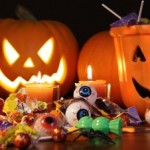 Has Anyone Ever Actually Poisoned Or Put Razor Blades or Needles in Halloween Candy?
Has Anyone Ever Actually Poisoned Or Put Razor Blades or Needles in Halloween Candy?
Remember your mom sorting through your Halloween candy as a kid, looking for signs of ‘tainted’ candy laced with poison, needles or razor blades? It turns out, unless she was just using it as an excuse to steal the good candy before you got it, she was wasting her time. You are more likely to get attacked by a samurai sword wielding bear while trick or treating than be poisoned by a stranger. Further, it’s more likely that your Halloween candy will be poisoned or otherwise tampered with by one of your parents or family members, than a stranger. Think about that while your mom is “checking out” your candy before letting you eat it. 😉 So why all the worry? Because the… (more)
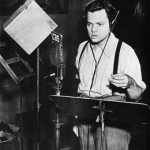 The “War of the Worlds” Mass Panic That Never Really Happened
The “War of the Worlds” Mass Panic That Never Really Happened
On October 30, 1938, from the Mercury Theater in New York City, Orson Welles broadcasted a “modernized” radio play of H.G. Wells’ (no relation) 1898 novel “War of the Worlds.” For the last three quarters of the century, we’ve been told that this fictionalized CBS broadcast sent Americans into a panic; that citizens across the country did not realize that this was science-fiction (despite the fact that it was explicitly stated at the beginning and twice during the broadcast) and thought the USA was under attack from an invading Martian army. Littered with realistic simulated news reports and “eyewitness accounts,” the hour long broadcast was innovative and an extremely entertaining way to present the story. But the thing is, no such nation-wide panic actually occurred. While there were certainly many exceptions, documented… (more)
 Why Black Cats Are Considered Bad Luck
Why Black Cats Are Considered Bad Luck
Black Cats weren’t always the butt of superstitions, feared, or even considered bad luck. In fact, in early Egyptian times, dating back as far as 3000 BC, cats (including black ones) were the rock stars of the animal world, held in high esteem; to kill one was considered a capital crime. It wasn’t until the middle-ages in Europe that the black cat’s rock star status started to go downhill as they began to be associated with so-called witches. The hysteria of witches practicing black magic had just hit Europe and alley cats were often cared for and fed by the poor lonely old ladies (funny how some things never change) later accused of witchery. Their cat companions, some of which were black ones, were deemed guilty of witchery by association. This belief was taken up a… (more)
 No Witches Were Burned During the Salem Witch Trials
No Witches Were Burned During the Salem Witch Trials
When you think about people disposing of witches a few hundred years ago, you probably imagine a woman tied to a stake jutting up from a pile of smoking wood. The burning of witches has become so ingrained in witch-hunt canon that it’s a cliché. But the truth of the matter is that the burning of people convicted of being witches wasn’t all that common in England. By the time the colonies were set up, English law forbade burning people alive, which meant that no witches could be burned in the American colonies as a result of the trials. The Salem Witch Trials are probably the most well-known American witch hunt. They took place between 1692 and 1693 in colonial Massachusetts, just as the European witch hunts were winding down. Previous to the European hunts… (more)
Being wary of Friday the 13th is much more than a quaint superstition observed by a few uneducated people in distant, unreachable towns and hamlets. In the United States alone, it is estimated that between 17 and 21 million people dread that date to the extent that it can be officially classified as a phobia. So why is Friday the 13th considered such an “evil” day? The origins aren’t perfectly clear, but we do know that both Friday and, separately, the number 13 have long been considered unlucky and it was around the late 19th century that the first documented instances started popping up of people putting the two together to form the unluckiest day of all. To start with… (more)
Candy Facts:
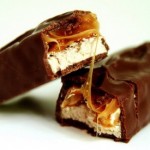 The Snickers Candy Bar was Named After a Favorite Horse of Creator Frank Mars in 1930
The Snickers Candy Bar was Named After a Favorite Horse of Creator Frank Mars in 1930
Frank Mars was the creator of the Snickers candy bar and founder of Mars, Inc, originally called Mar-O-Bar Co., which is currently the 6th largest privately held company in the world with annual sales of around 21 billion dollars. The company is still 100% owned by the Mars family, producing such popular products as 3 Musketeers, Mars bars, Combos, Skittles, Dove Chocolate, M&Ms, Milky Way, Starburst, Twix, and Whiskas cat food, among other product. The Snickers candy bar was the second candy bar sold by Mars… (more)
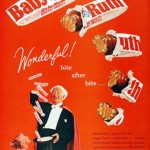 Baby Ruth Candy Bars Actually Were Named After Babe Ruth
Baby Ruth Candy Bars Actually Were Named After Babe Ruth
The rumor that they were not was actually started by the company who made them originally, the Curtiss Candy Company founded by Otto Schnering. They claimed it was named after Ruth Cleveland, the granddaughter of President Grover Cleveland. Ruth Cleveland supposedly visited their plant and, while there, inspired the name for the candy bar. There are a quite a few problems with the official line, but the main problem is that Ruth Cleveland died in 1904 at the age of 12 years old, some 17 years before the Baby Ruth candy bar was created and about 15 years before the Curtiss Candy Company was created. Further, Grover… (more)
 Who Invented Reese’s Peanut Butter Cups
Who Invented Reese’s Peanut Butter Cups
A popular chocolate cup filled with delicious peanut butter, Reese’s Peanut Butter Cups were created by a man named Harry Burnett (H.B.) Reese. Reese was born May 24, 1879 in Pennsylvania to a farming family. He married in 1900 and went on to have sixteen children. (Yes, 16!) By 1903, not surprisingly, he was struggling to support his growing family, so took on all manner of jobs from butcher to factory worker. In 1917, Reese found an advertisement to work on a dairy farm owned by Milton S. Hershey, owner of the Hershey Chocolate Company, in Hershey, Pennsylvania. Though he didn’t know it at the time, taking the job would shape the rest of Reese’s future. He… (more)
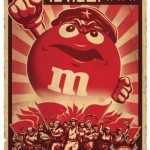 What the M’s stand for in “M&Ms”
What the M’s stand for in “M&Ms”
In 1941, Forrest Mars Sr., of the Mars candy company, struck a deal with Bruce Murrie, son of famed Hershey president William Murrie, to develop a hard shelled candy with chocolate at the center. Mars needed Hershey’s chocolate because he anticipated there would be a chocolate shortage in the pending war, which turned out to be correct. As such, the deal gave Murrie a 20% stake in the newly developed M&M; this stake was later bought out by Mars when chocolate rationing ended at the end… (more)
Much like other hard sugar candies, Pop Rocks are made primarily of sugar, corn syrup, water, and artificial flavoring. It turns out, what causes it to pop when it comes in contact with the moisture and heat in your mouth is not due to any ingredient. Rather, it is due to the way the candy is made, which we know in detail thanks to the fact that the manufacturing process is patented and thus the process is laid out for all to see in the patent. Basically, what they do is heat the ingredients together, bringing the mixture to boil. They continue to boil it until the moisture level descends suitably so that a thick syrupy substance remains. In normal hard sugar… (more)
There are three main types of nougat: white nougat; brown nougat; and German nougat. White nougat is made primarily from whipping egg whites, sugar, nuts (usually almonds, pistachios, or hazelnuts), and honey together. Brown nougat is made in a very similar fashion as white nougat, except generally without the egg whites and brown nougat usually uses caramelized sugar, making it a lot thicker than white nougat. Finally, German nougat, also known as “Viennese Nougat”, is generally made with only… (more)
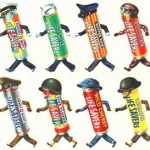 All Lifesavers Spark When Chewed, Not Just Wintergreen
All Lifesavers Spark When Chewed, Not Just Wintergreen
The flash you see when these hard sugar candies are crunched is caused by triboluminescence, which is similar to the electrical charge build-up that produces lightning, except on a much smaller scale here. With most hard sugar candies, this flash tends to be mostly outside of the human visual spectrum; typically giving off most of the flash in the ultra-violet spectrum. However, many other kinds of hard sugar candies, such as normal fruit lifesavers will give off a very dim flash in the visual spectrum if crunched and a nice bright flash in the ultra-violet spectrum. This phenomenon has been noticed throughout history, long before Lifesavers were invented. The English scholar Francis Bacon wrote in Novum Organum in 1620, “It is well known that all sugar, whether candied or plain, if it be hard… (more)
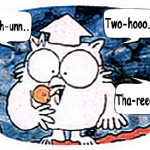 How Many Licks It Takes to Get to the Center of a Tootsie Pop
How Many Licks It Takes to Get to the Center of a Tootsie Pop
Obviously this depends somewhat on a variety of factors such as the size of the person’s tongue; whether they concentrate the licking on just one side; how hard they press with their tongue; amount of saliva; etc. In any event, many researchers and others have attempted to tackle this problem with the following results: Engineering students from Purdue University created a licking machine that mimicked the human tongue and the licking motion. They then tested this machine against real tootsie pops with the results being an average of… (more)
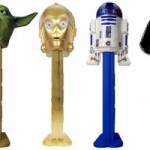 What “PEZ” in “PEZ Dispenser” Stands For
What “PEZ” in “PEZ Dispenser” Stands For
PEZ started out as a peppermint breath mint company in Vienna, Austria in 1927. The name PEZ derives from this fact. Specifically, “PEZ” comes from the German word for peppermint, “pfefferminz”, with the “p” coming from the first letter of the word; the “e” is from the sixth letter, which is the middle of the word; and the “z” from the last letter. The first PEZ mints were not served in modern day style PEZ dispensers, but rather were sold in tin containers, very much like modern day Altoids tins. It wasn’t until 1948 that the first PEZ dispenser was created, called a “Box Regular”, introduced at the Vienna… (more)
Chocolate contains an alkaloid called “theobromine”. Theobromine is in the same family as caffeine and is a type of stimulant (they both are mythylxanines). Theobromine stimulates the central nervous system, cardiovascular system, and causes a slightly increases blood pressure. Dogs and certain other animals, such as horses and cats, cannot metabolize theobromine as quickly as humans can; this causes the above effects to be much more severe than is the case with humans. The specific… (more)
Bonus Halloween Facts:
- Candy corn is made from sugar, corn syrup, glaze, egg whites, honey glycerin, mineral oil, wax, and salt, with coloring added. Each piece of candy corn contains about 6 calories. About 20 million pounds of candy corn is sold annually, the vast majority of which is purchased for Halloween. Candy Corn was invented in the 1880s by George Renninger of the Wunderlee Candy Company.
- The word “pumpkin” comes from the Greek word “pepon”, meaning “melon”.
- Today in North America, around $3 billion is spent every year on Halloween costumes alone.
- Haunted house attractions bring in about half a billion dollars annually
- Around 1.4 billion pounds of pumpkins are grown in the United States every year with the vast majority being used around Halloween.
- Halloween candy sales average around $2 billion per year in the United States. Chocolate candy bars are consistently rated as the #1 treat to get, with the Snickers candy bar being most preferred. In addition, Reese’s peanut butter cups and candy corn are among the most sold Halloween candy items.
- Over 35 million Halloween cards are given every year, producing close to a gross of $100 million.
- Around 35 million children in the U.S. between 5 and 13 years old go trick or treating every year, which is around 90% of all children in that age group.
- Around 50% of adults in the U.S. will dress up for Halloween and about 67% will attend a Halloween party or go trick or treating with their children.
| Share the Knowledge! |
|



